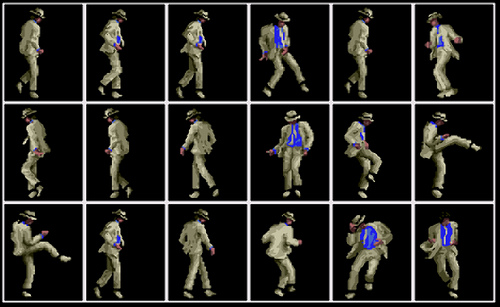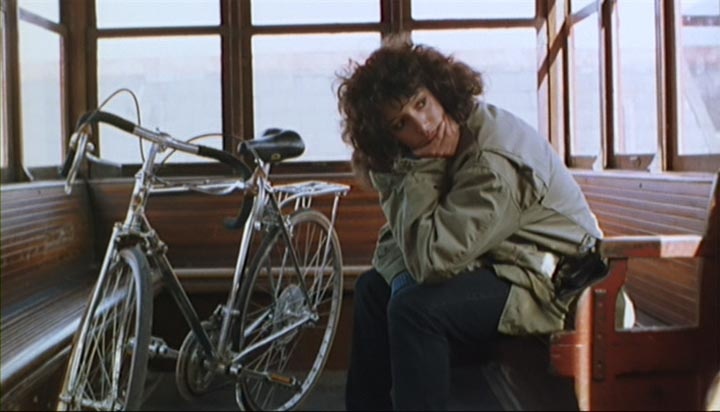Blog
SCMS ’18 CFP: Postindustrial Cities in Popular Media
At a 1984 campaign stop, Walter Mondale claimed that the policies of Ronald Reagan were “turning our great industrial Midwest and the industrial base of this country into a rust bowl.” Mondale’s campaign failed, but his sense that the economic devastation surrounding the Great Lakes would be a source of massive political power has proven to be prescient.
Over the last 40 years, the “Rust Belt” has gained considerable cultural and political power in the United States. Not merely a descriptor for a geographical region, the “Rust Belt” became, and remains, a potent symbol of American decline and, perhaps, American renewal. Much of the social construction of the idea of the Rust Belt—both then and now–has occurred in popular media. Following the work of historians of the Rust Belt like Steven High, as well as geographers like Wilbur Zelinsky, Roger Downs and David Stea, this panel aims to investigate the emergence, evolution, and influence of the cultural concept of “the Rust Belt” through film, television, graphic novels, pop music, and other mediated forms.
Potential submissions may address issues including, but not limited to, the following:
· Representations of post-industrial regions outside the United States (The Ruhr Valley, The Golden Horseshoe, etc)
· Considerations of the ethics of “ruin porn” in documentary and photographic approaches to the Rust Belt
· Contemporary attempts by Rust Belt film offices to court film productions to generate economic activity and positive images of their cities
· The discourse of “authenticity” in popular music from the Rust Belt
· Media produced by and for labor unions
· Rust Belt cities as “stand ins” for other cities, real (New York) and fictional (Gotham)
· Post-apocalyptic and/or horror narratives set in the Rust Belt
· Stars and/or auteurs associated with Rust Belt cities (Bill Murray, Harvey Pekar, Jim Jarmusch, LeBron James, August Wilson)
· The importance of sports media to diasporic Rust Belt populations
· The impact of deindustrialization on relations of sexuality and gender in Rust Belt texts
· Media lionizing the “Rust Belt Recovery” and issues of gentrification in urban renewal
· Representations of specific cities (Buffalo, Chicago, Cleveland, etc) or industries (mining, steel, rubber, auto manufacturing) in popular media
If interested, please send an abstract (~350 words), a brief biography (~200 words) and a tentative bibliography (3-5 sources) to Michael D. Dwyer at dwyerm@arcadia.edu by August 7, 2017. Decisions by August 14.
Sound Tracks: Pop Music through Media

Next semester I’ll be teaching a University Seminar called Sound Tracks: Pop Music through Media, a course that explores the way that the industry that surrounds the production of pop music has shaped the cultural meaning of music itself, and influenced the development of other media forms (Hollywood film, television, video games, and media technology). The course will first consider the structure of the music industry (Unit 1), then examine cultural phenomena like stardom, genre and ideology through pop music (Unit 2), next analyze the interaction between hardware developments like the cassette deck and the iPod on the “software” of the album and the “leaked” single (Unit 3), and finally explore the relationship between pop music and screen media (film, television, and the Internet).
Course description below, after the jump.…
The Joy of Media Studies
In teaching my undergraduate Media Studies seminar, I often illustrate concepts that students find abstract or complex with examples from pop music, and especially music video. A few weeks ago, I was using a series of clips to run through some dominant concepts in mid-twentieth century media studies, a funny thing happened in my classroom.
I started to play this clip…
…and just as I reached to turn the sound down and start talking about QD Leavis, my students started singing. All of them. Loudly.
Mapping our Lives with College Memes
Unless you were attending Deep Springs College and were too busy herding cattle by day and reading Nietzsche by night this spring to notice, your campus probably had its own “College Memes” page on Facebook. My own alma mater, the University of Miami (woosh, woosh) has several FB meme pages, each with approximately 2000 likes (this for a school with about 10,000 undergrads).
The Huffington Post, itself the newspaper equivalent of an internet meme in some ways, covered the phenomenon this February, after multiple college-centric meme figures had established themselves nationwide–Sheltered College Freshman, Lazy College Senior, Scumbag Steve, etc.
These College Memes pages are essentially all the same: you have your standard “One does not simply walk into [place where students routinely walk into]”; your various jokes about the quality of dorms, dining hall food, or campus social life; some scattered laments on the order of “Oh, my school is so full of hipsters!”; and the occasional “HAI, I don’t take my assignments seriously: LOL!”¹
The New Yorker, Seinfeld, and Intertextual Pleasures
A friend of mine posted this cartoon from The New Yorker’s caption contest on Facebook the other day, accompanied by the comment: “Holy shit! They finally did it! And yes, I submitted ‘My wife is a slut.'”
This struck me as weird, because a) It’s sort of an unremarkable cartoon b) I had no idea this friend cared about New Yorker caption contests (I thought that was just Roger Ebert?) and c) the incongruous ‘shock’ misogyny coming from him.
Read this Book: Girls to the Front

I’ve started and re-started this post six times already, trying to come up with an intriguing angle on Girls to the Front, the book by Sara Marcus that occupied the coveted “first-book-Michael-will-read-after-the-school-year-ends” for 2010-2011. For the seventh attempt at writing this entry, I’m going to try a simpler approach. Read this book. Trust on this.
More after the jump.
The Academic Job Market: One Year Later.
Emo Spring!One year ago today, I had given up hope.
Every Sunday in the summer of 2009 my partner and I went to a small donut shop in East Syracuse, ordered two donuts, and took a booth in the corner. Millworkers came in to buy coffee and lotto tickets. We worked on research statements and teaching philosophies. In late September we hung a map of the United States on the wall of our Syracuse apartment, and began to stick a pin in the map for every appropriate job listing we could find. By November there were 90 pins stuck in the map, color coded for tenure-track, visiting, and post-doc positions that each of us had applied to.
Future Heads in Media Studies

The October issue of PMLA, the official publication of the Modern Language Association, was among my favorite reads of the year. The special issue on “Literary Criticism for the Twenty-First Century,” however, has held top-of-the-coffee-table status for three strong months now. One of the reasons why, aside from the general quality of the scholarship, is what Jonathan Culler calls in the introductory essay “a motif of return.” One of my major research areas is the function of nostalgia–the much-maligned practice of mournfully looking backward that, in my work, I argue can be utilized for diverse and overlapping purposes. Far from being ahistorical, I argue elsewhere, nostalgia tells us about our affective relationships, which are always historical relationships.
It’s perhaps natural that literary studies would get a little nostalgic. Literature and literary scholarship are fascinated with the past. The discipline itself is derived from the tradition of the scribes charged with cataloging the history of their society. Consider its titanic figures–Homer, Shakespeare, Balzac, Hegel, Marx, Twain, Dickinson, Ellison — even literary studies after the age of critical theory has found itself ever drawn to the past. This is, of course, a great strength. One of literary studies’ primary functions is to retain, reexamine, and recontextualize the culture of past societies, and it utilizes its past to think through problems of the present. Retrospection does not equal regression, and many of the best works of criticism, critical theory, and literary analysis have profited from looking back over past historical developments (Foucault’s The Birth of the Clinic), past texts (Fiedler’s “Come Back to the Raft Ag’in, Huck Honey!”) or past figures (Holly Jackson’s work on Emma Dunham Kelley) . As such, the motif of return that Culler notes in his introduction comes as no real surprise.
But, I found myself wondering while reading the issue, what about media studies? For all of literary studies’ interest in its past, looking backward is much more taboo in the realm of media studies. A special issue of Screen or Cinema Journal subtitled “The Future of Media Studies” would, I’d wager, feature much less retrospection. Whether it is the discussion on social media networks, panels at the recent Society for Cinema and Media Studies convention, or job listings for new professorships, the emphasis in media studies certainly does not seem to lay in silent cinema, the industrial history of radio, or music archivists, but rather sexy fields like new media and digital humanities. This is, after all, the same attitude that has allows so much of film and television history to go unarchived, and reflected in something so basic as the Facebook News Feed or Twitter Stream, which updates constantly but allows little easy access to past records.
So how might we think about “the future of media studies”? Frankly, I’m not sure. David Gauntlett has issued a brave attempt here, though I think the 1.0 vs 2.0 dichotomy is one that breaks down under close scrutiny, and truly, one can hardly consider 2.0 to represent “the future” when it actually more closely approximates “the present” or perhaps even “the 1990s” (and, as one of the 1990s primary advocates, I say that without malice).



